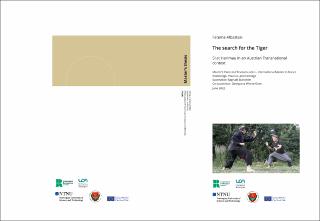| dc.description.abstract | The Southeast Asian martial arts of Pencak Silat holds a long tradition and heritage of embodying mental-spiritual discipline, performative arts, ritual practice, social and cultural values, and self-defence. Inspired by the myths surrounding the phenomenality of the ancestral tiger spirit, the research explores how the Minang style of Silat known for its tiger style continues its transmission in the context of Silat in Austria.
The fieldwork was conducted on three main training sites from a transnational Silat training group for two months in Vienna. The Austrian training group in Vienna continues to practice Silat with the background experience of visiting and training on the native land of this martial art style in Sumatra. The objective was to reveal how the transnational group makes sense of the embodied practice of Silat and what significance the culturally translated context plays in their social, physical, and learning experiences.
I posit that there is a transmission process taking place that is realised in their own ways. With my findings, I demonstrate how the community engages with Silat through embodiment and transmission in a dedicated ritualised space to practice the different aspects of the art form. This ethnographic study is apprentice-based research analyses relational somatic modes of attention in the mirroring technique and the emotional affects embodied in Silat sparring. | en_US |

